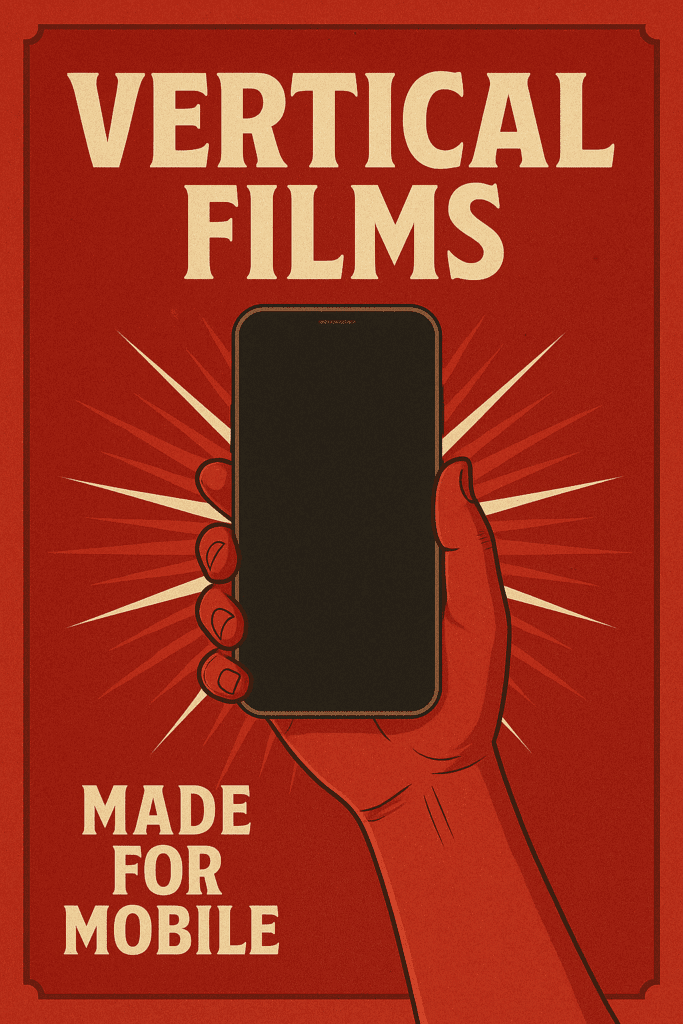What Are Vertical Films—and Why Is Everyone Talking About Them?

Not long ago, vertical video was the punchline of every filmmaking joke. If you dared shoot in portrait mode, you’d be accused of “doing it wrong.” But in 2025, that’s all changed. Vertical films—yes, movies and shows shot tall rather than wide—are exploding in popularity, and they’re changing the entertainment landscape in big ways.
So what exactly are vertical films? Where did they come from? And why are so many people watching them?
Let’s break it down.
Vertical Films 101: What Are They?
A vertical film is any video content shot in a 9:16 aspect ratio—designed to be viewed on your phone, the way you naturally hold it. Instead of flipping your screen to landscape mode, these films embrace the vertical frame.
Think TikToks, Instagram Reels, and Snapchat Stories—but longer, more polished, and often episodic. Some last just a minute or two per episode, while others stretch across full narrative arcs. And yes, people binge them.
Where Did This Trend Start?
The vertical format didn’t come out of nowhere. Here’s a quick timeline:
Early Days: Vertical videos appeared on social media as amateur content. Platforms like Snapchat helped normalize it.
China’s Duanju Boom: The real game-changer was China’s rise of duanju—bite-sized vertical dramas, often full of cliffhangers and melodrama. They became so popular that companies started funding whole series just for mobile audiences.
Global Spread: Western creators followed. Today, apps like ReelShort, DramaBox, and FlexTV are bringing vertical series to massive global audiences. In fact, the vertical drama market is projected to hit $14 billion by 2027.
Why Are People Hooked?
People love vertical films for the same reason they love TikTok: they’re fast, emotional, and right in your palm. Some common reasons people tune in:
Convenience: No rotating your phone—watch anytime, anywhere.
Snackable content: Episodes are short, addictive, and often end on dramatic cliffhangers.
Emotional pull: Many vertical series deliver intense emotional payoffs quickly—something people crave during stressful times.
Mobile-native design: They’re made for phones, not adapted to them.
Fun fact: Viewership is particularly strong among women aged 20–60, many of whom say these shows are a welcome escape during work breaks, late nights, or commutes.
How Are These Films Made?
Filming vertically requires rethinking the entire production process. Directors have to frame scenes differently, emphasizing vertical movement, close-ups, and centered action.
While many are still shot on phones, higher-budget vertical dramas are now using DSLR cameras with vertical rigs and full crews. And because the turnaround is fast (some shows are made in a week), vertical series are also creating new jobs for actors and crews—especially during industry slowdowns.
What People Are Asking
Here are some of the top questions people have about vertical films:
“Can vertical films replace TV or cinema?”
Not quite. They’re great for mobile viewing but not meant to replace the big screen.“Are vertical films real art or just clickbait?”
Both. Some are formulaic, but others are genuinely creative. Filmmakers are finding new ways to tell powerful stories in this format.“How do you make a vertical film?”
Start by filming in portrait mode, planning for the narrow frame, and focusing on strong close-up acting. You can shoot on a phone or camera with a vertical rig.“Where can I watch them?”
Try apps like ReelShort, DramaBox, YouTube Shorts, or even TikTok. Some creators also post full series to Instagram or Facebook.
The Future of Vertical Films
Vertical storytelling is here to stay. It’s not replacing traditional filmmaking, but it is becoming a permanent part of the media ecosystem.
Expect to see more creative risks, better production values, and maybe even the first breakout vertical feature film in theaters. (Yes, people are already experimenting.)
If anything, vertical films are a sign that the way we tell stories is evolving—fast. And if you’re a creator, actor, or producer? This might just be your opportunity to stand out in a crowded digital world.
